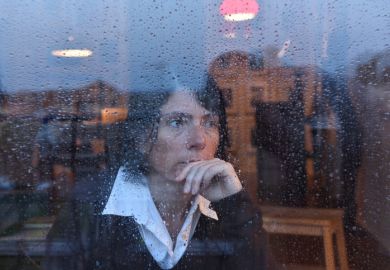A new academic book challenges much of the received wisdom about the nature and development of human sexuality.
“Chimpanzees and other apes have knobby bristles on the tips of their phalluses, which make them extremely sensitive,” write Loretta Cormier and Sharyn Jones – associate professors of anthropology at, respectively, the University of Alabama at Birmingham and Northern Kentucky University – in The Domesticated Penis: How Womanhood Has Shaped Manhood.
“Mating happens very quickly for these species, often within a matter of seconds. At some point in our evolutionary history, genetic change led to the loss of penis spines in our human ancestors, requiring males to spend much more time and effort in order to climax. In effect, it made sex less pleasurable for men and more pleasurable for women.”
Female sexual choice, continue the authors, “drives the selection of many male features that make males more attractive to females; these include the elaborate and colorful feathers of male peacocks, the prominent fibrous-fatty cheeks of male orang-utans, and the mating calls of water frogs”. It seems more than likely that “the numerous distinctive characteristics of the human penis – including its length, girth, bulbous head and coronal ridge, spinelessness, bonelessness, flexibility and capacity for relatively long-lasting copulation” have been shaped by the same process.
In other words, men are literally (as Shakespeare put it) “prick’d out for women’s pleasure”. So why is this not more generally known?
In order to answer that question, Professor Cormier and Professor Jones remind us that “there is perhaps no topic where cultural bias comes so glaringly into play as human sexuality”. In much evolutionary theorising, the implicit “message is that men create culture and women are the passive recipients of male cultural achievements…Too often, the standard story of evolution and cultural development has not afforded women the same degree of agency as is credited to men.”
These factors, argues The Domesticated Penis, have led to “a suite of interconnected hypotheses involving alpha males, concealed ovulation and the exchange of food for sex [which] ignore female agency in human sexuality, except as a deceptive strategy…Little consideration is given to the possibility that females actively seek out sexual encounters and choose mates that provide them with enhanced sexual pleasure. Also typically minimized is the extent to which female sexuality is expressed outside of reproduction.”
While it is obviously crucial that our species is “big-brained, bipedal and culture-bearing”, Professor Cormier and Professor Jones seek to convince us that “the evolution of the penis is also critical to understanding human nature”.
Although “in many cultures the phallus has been symbolically associated with masculinity, power, ownership and control”, they conclude, perhaps it is time to think again, “given the likelihood that females actually directed the evolution of our species with mate selection”.
POSTSCRIPT:
Print headline: For her pleasure: how womanhood helped shape evolution of manhood
Register to continue
Why register?
- Registration is free and only takes a moment
- Once registered, you can read 3 articles a month
- Sign up for our newsletter
Subscribe
Or subscribe for unlimited access to:
- Unlimited access to news, views, insights & reviews
- Digital editions
- Digital access to THE’s university and college rankings analysis
Already registered or a current subscriber?




